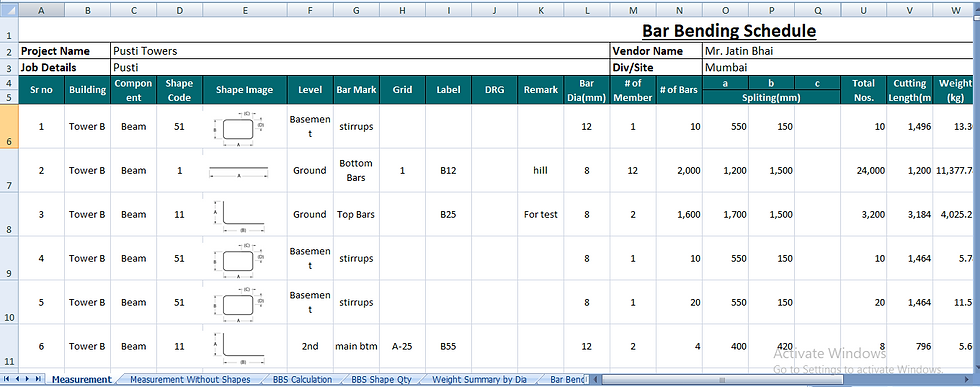What Is Rolling Margin in TMT Bars and Why It Matters in Construction?
- Jimish Sura
- Oct 2
- 2 min read
In the realm of construction, the reliability and precision of TMT (Thermo-Mechanically Treated) bars are fundamental to ensuring the structural soundness of any project. Among the key technical parameters that influence the performance of reinforcement steel is the rolling margin—a concept every civil engineer and contractor should grasp to uphold safety and durability standards.

What Is Rolling Margin in TMT Steel?
Rolling margin refers to the allowable variation in the diameter of TMT bars that occurs during the steel rolling process. As per the Indian Standard IS 1786:2008, manufacturers are permitted a specific tolerance range, expressed as a percentage of the nominal diameter. This margin accounts for natural deviations during production and is not considered a defect.
For instance, if you purchase a 12mm TMT bar, its actual diameter may slightly differ—within the permissible range—due to rolling margin. These variations are standardized to ensure consistent quality without compromising structural integrity.
🧮 How to Calculate Rolling Margin
The rolling margin is calculated using the following formula:
Rolling Margin (%) = (Actual Diameter – Nominal Diameter) / Nominal Diameter × 100
Steps to calculate:
Measure the diameter at multiple points along the bar using precision tools.
Compute the average of these readings to determine the actual diameter.
Apply the formula to find the percentage deviation.
📐 Rolling Margin Tolerances as per IS 1786:2008
The standard defines the following tolerance limits:
Bar Diameter | Permissible Rolling Margin |
Up to 20mm | +3% to -5% |
Above 20mm | +3% to -3% |
Examples:
A 12mm bar may range from 11.4mm to 12.36mm.
A 25mm bar may range from 24.25mm to 25.75mm.
Additionally, the actual cross-sectional area must not fall below 95% of the nominal area, ensuring the bar retains its structural strength.
🏗️ Why Rolling Margin Matters in Construction
1. Structural Integrity
Rolling margin affects the cross-sectional area of reinforcement bars, which directly influences the load-bearing capacity of concrete structures. Engineers must factor in these deviations during structural design to maintain safety margins.
2. Cost Considerations
Bars with tighter tolerances may come at a premium but offer greater consistency in structural calculations. On the other hand, bars with wider margins might be more economical but require careful design adjustments.
3. Quality Assurance
Rolling margin serves as a benchmark for quality control. Trusted manufacturers like Shree TMT adhere strictly to IS standards, ensuring their bars consistently fall within the prescribed limits. This reliability is vital for large-scale projects where consistency is non-negotiable.
4. Regulatory Compliance
All TMT bar producers in India must comply with IS 1786:2008. This standardization ensures uniformity across the industry and provides engineers with dependable data for structural planning.
⚠️ Risks of Non-Compliance
If TMT bars exceed the rolling margin limits:
Oversized bars may hinder proper concrete placement.
Undersized bars can weaken the structure.
Both scenarios can lead to delays, increased costs, and safety risks. Hence, regular testing and supplier verification are essential to ensure compliance.
🛠️ Choosing the Right TMT Bars
When sourcing TMT bars, prioritize manufacturers with robust quality control systems. Shree TMT, for example, ensures that every batch meets rolling margin specifications, offering dependable reinforcement for your construction needs.




Comments